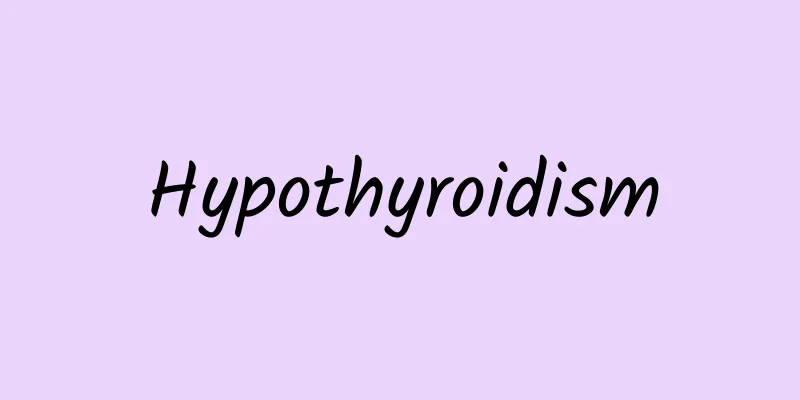Symptoms of white spots on skin

|
Vitiligo is a relatively common disease. It is an acquired localized depigmentation, which means that the body's melanocytes will disappear. Although the mechanism of the disease is not particularly clear at present, it is very harmful to patients. It often causes the appearance of white spots and is indeed difficult to treat. Let's take a look at some of the symptoms of vitiligo on the skin. Symptoms of white spots on skin 1. Localized type (1) Focal type: one or more white spots are limited to one area but are not distributed segmentally; (2) Unilateral type (segmental type): one or more white spots are distributed segmentally and suddenly disappear at the midline; (3) Mucosal type: only the mucosa is affected. 2. Scattered type (1) Common type: widespread and scattered white spots; (2) Facial acral type: distributed on the face and limbs; (3) Mixed type: mixed distribution of segmental type, facial acral type and/or common type. 3. Generalized total or almost total depigmentation. More than 90% of vitiligo is of the scattered type, and among the remaining vitiligo, localized vitiligo is more common than generalized vitiligo. According to the degree of pigment loss in the lesions, the disease can be divided into complete and incomplete types. The former has a negative reaction to dihydroxyphenylalanine (DOPA), melanocytes disappear, and the treatment response is poor. The latter reacts positively to DOPA, and the melanocytes do not disappear but only decrease in number, so the chance of cure is high.treat 1. Hormone therapy (1) Systemic therapy is mainly suitable for patients with generalized progressive vitiligo. Oral or intramuscular injection of hormones can stabilize progressive vitiligo as quickly as possible. (2) Local treatment: Topical corticosteroids are effective in treating localized vitiligo, but attention should be paid to the adverse reactions caused by long-term use of topical corticosteroids. Commonly used drugs in clinical practice include halometasone ointment, mometasone furoate cream, etc. 2. Phototherapy and photochemotherapy (1) Phototherapy with narrowband ultraviolet (NB-UVB) has a certain effect in treating localized or generalized vitiligo. (2) Photochemotherapy (PUVA): For localized vitiligo, topical application of furanocoumarins (8-MOP, psoralea corylifolia tincture) + sun exposure is a good treatment option and can be used in adults and children over 5 years old. 3. Transplantation therapy is suitable for patients in the stable period, with few skin lesions in the past few days and no scar-causing constitution. Commonly used methods include autologous epidermal transplantation, microskin graft transplantation, autologous cultured melanocyte transplantation, etc. 4. Immunosuppressants: For areas that are not suitable for the use of hormones, or to avoid adverse reactions to long-term use of hormones, topical calcineurin inhibitors (tacrolimus, pimecrolimus) have certain effects. 5. Vitamin D3 derivatives Vitamin D3 derivatives can be combined with NB-UVB, PUVA, etc. for treatment. It can also be combined with topical corticosteroids and calcineurin inhibitors. |
<<: What are the dangers of an enlarged uterus?
>>: What causes uterine wall thickness?
Recommend
The efficacy and function of Dezhong Yupingfeng granules
De Zhong (Yupingfeng Granules) is a gynecological...
How can big three Yang heal faster?
There are many diseases in life that make people ...
Can pregnant women eat hamburgers during confinement?
Hamburger is a kind of Western food suitable for ...
How to get rid of blushing after drinking
Drinking in moderation will not cause great harm ...
What to do if you are allergic to washing ginkgo
Ginkgo is a traditional Chinese medicine, and it ...
Instructions for using Cuscuta
To be honest, I never knew about the existence of...
How to treat recurrent genital herpes
As we all know, genital herpes, as the name sugge...
The effect of hypnosis
We have all heard of hypnosis, but we don’t know ...
Causes of premenstrual breast tenderness
Many girls will have many signs before their peri...
What medicine should I use for red, swollen and itchy upper eyelids
Redness, swelling and itching of the eyelids are ...
What causes swollen and painful eyelids?
Swollen and painful eyelids means puffy eyes. The...
What causes small red rashes on the abdomen?
In daily life, small rashes appearing on the bell...
You should not take four kinds of medicines if your platelet count is low
Low or high platelet count has a great impact on ...
What causes acne along the hairline?
Acne is a common skin problem. Acne is also calle...
Cubital Tunnel Syndrome Differential Diagnosis
Cubital tunnel syndrome is a disease that refers ...









